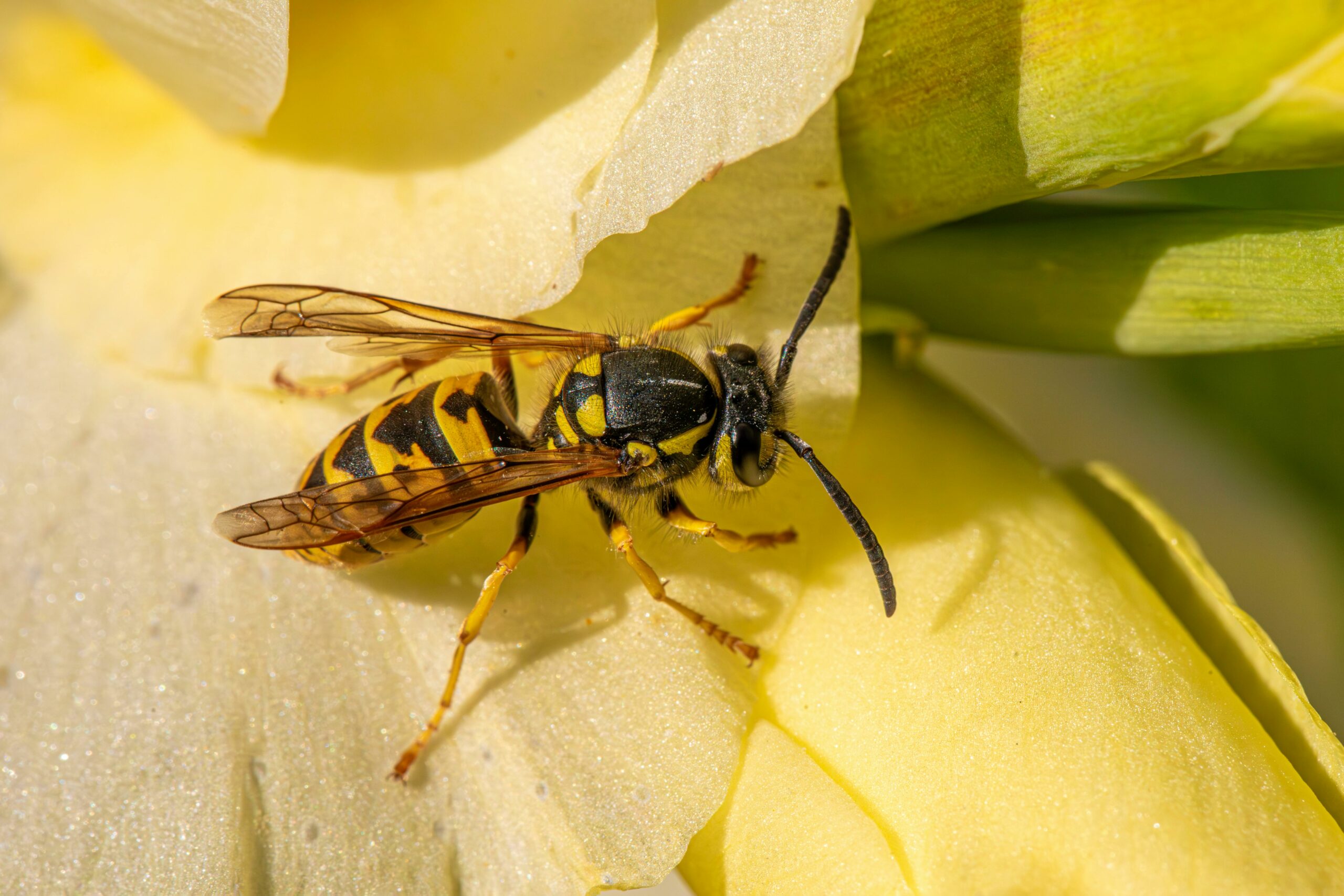Why are there so many yellowjackets in the fall?

JACKSONVILLE, Ill. — Despite the bad name they get, yellowjackets are beneficial insects.
The larvae are meat eaters, consuming caterpillars and other insects that adults have captured and brought back to the nest. Adults, on the other hand, primarily feed on flower nectar and other sweet liquids. However, as the calendar creeps closer and closer to fall, we often encounter yellowjackets more frequently, which can result in painful stings.
Is it a yellowjacket or a bee?
Yellowjackets are commonly confused with honey bees and are often referred to as ground bees. While they are a similar size, they are rather easy to tell apart. Yellowjackets have bright yellow and black bands on their abdomens and are shiny, while honey bees are golden brown and fuzzy. Yellow jackets are also capable of stinging multiple times.
Why do we see more yellowjackets in the fall?
To understand why we often start seeing yellowjackets more frequently in the fall, we need to look at their lifecycle. Yellowjacket queens will overwinter in protected areas (under the bark of rotting trees, leaf litter, firewood, etc.), and come spring, they will emerge and begin constructing nests. Nests are usually built underground but may occasionally be built in building walls. Colonies are annual, meaning a new one is started every year; they do not reuse nests.
As the seasons progress, several generations of wasps will be produced. By late summer, nests may contain thousands of workers. This is when they can begin to cause problems. All of these wasps need something to eat. As fall approaches and progresses, there are often fewer plants blooming in our landscapes, reducing the amount of food available for yellowjacket colonies.
Because of the lack of food, they will begin searching far and wide. They are attracted to sweet food items such as carbonated beverages, juices, candy, fruit, and ice cream. When it comes to beverages, make sure to put them in cups outdoors so you can see what you are drinking. If a yellowjacket decides to check you out, blow on it or brush it away rather than swatting at it, which commonly results in you getting stung.
Yellowjackets will also aggressively protect their nests, and people often come into conflict with them while mowing or during other outdoor activities near their nests.
Managing yellowjackets
If the nest is located away from high-traffic areas, a good option is to wait and do nothing since nests will die out once cold temperatures arrive. However, occasionally nests are in areas and pose a threat to people.
It is best to treat nests at dawn or dusk when they are least active and when wasps have returned to the nest. Wasps will fly at light, so if you use a flashlight, cover it in red cellophane (they cannot see red). Also, wear protective clothing (long pants, long sleeves, gloves, etc.). If accessing the nest is difficult or you are not comfortable treating yourself, contact a professional pest control company.
In-ground yellowjacket colonies can be managed by applying an insecticide into the nest. After the nest has been drenched or dusted, place a shovel full of soil over the exit hole. If the nest is inside a building, use an approved insecticidal dust on wall openings where the yellowjackets are entering. Do not seal the entrance to a colony in a wall while it is active. Doing so can result in yellowjackets chewing through the walls.
Miss Clipping Out Stories to Save for Later?
Click the Purchase Story button below to order a print of this story. We will print it for you on matte photo paper to keep forever.

